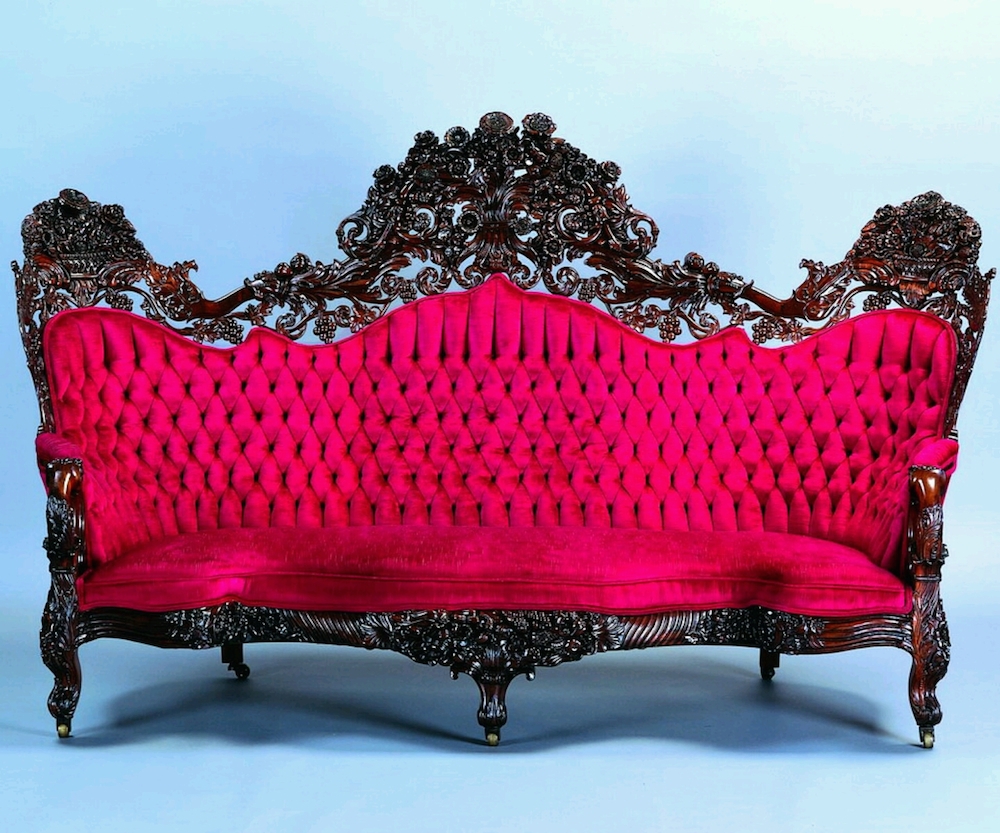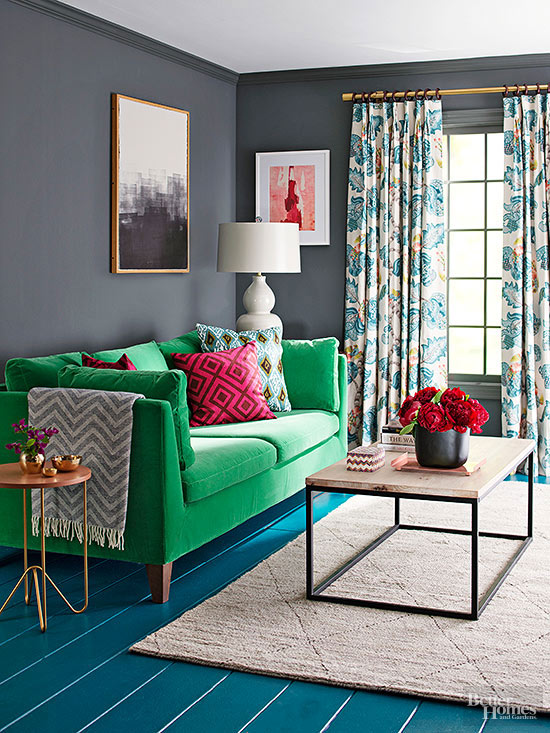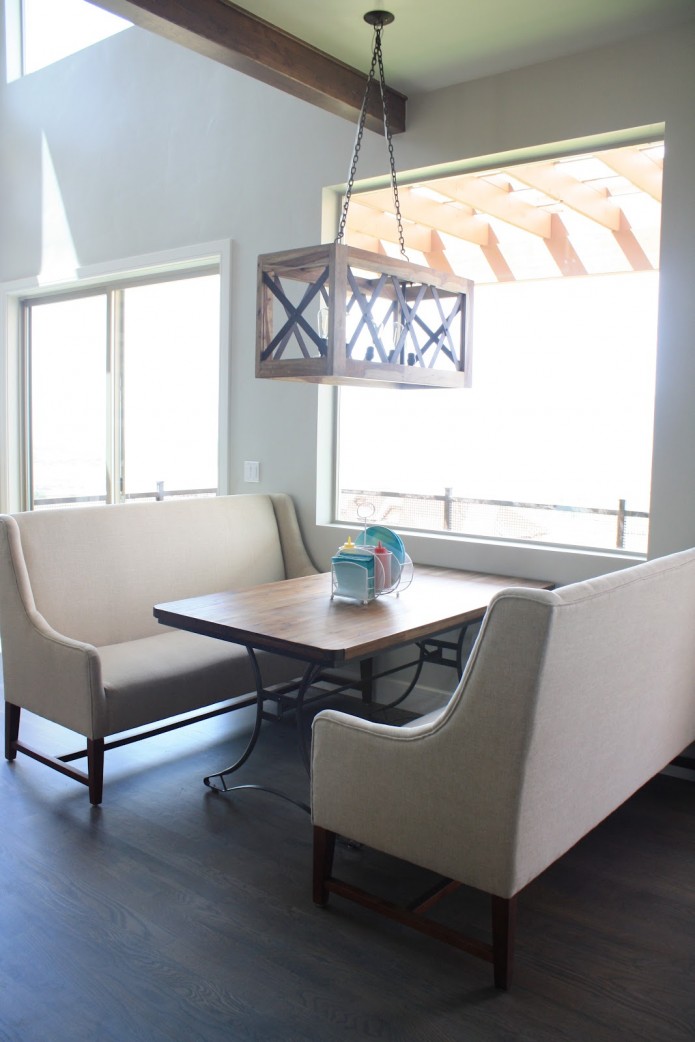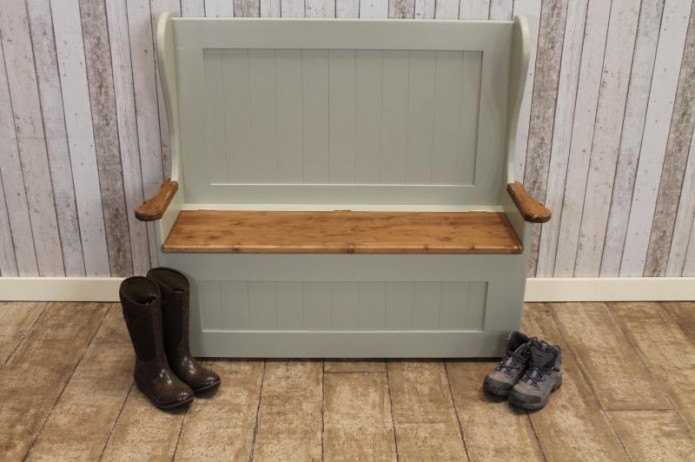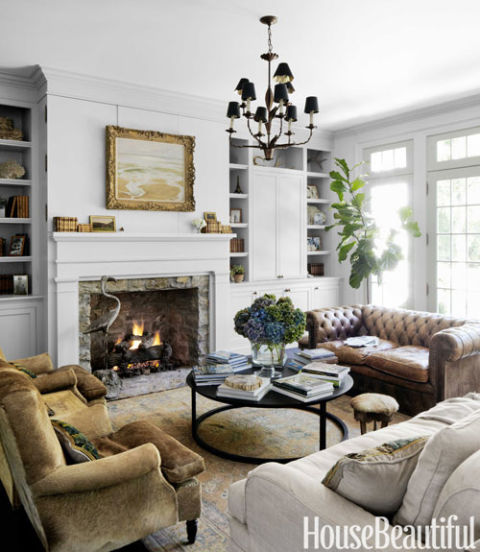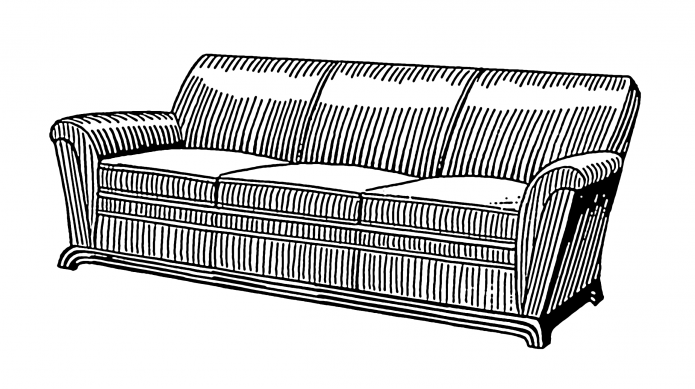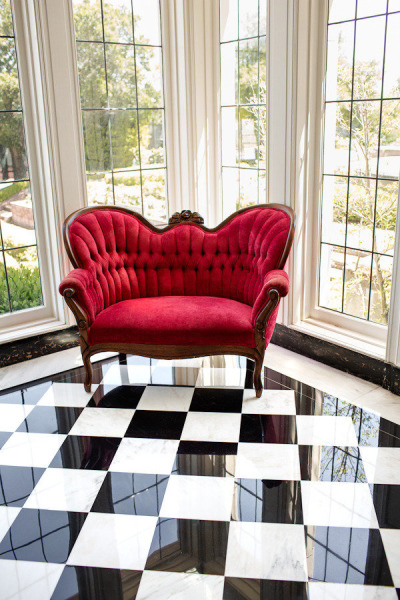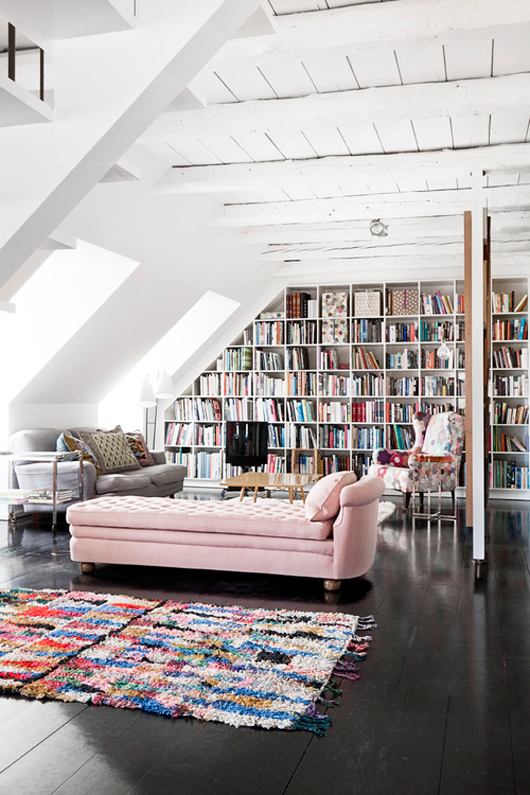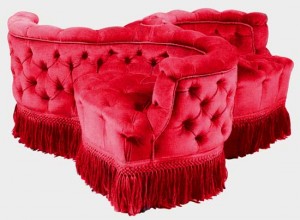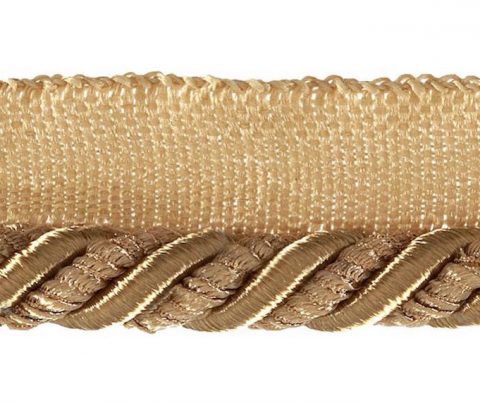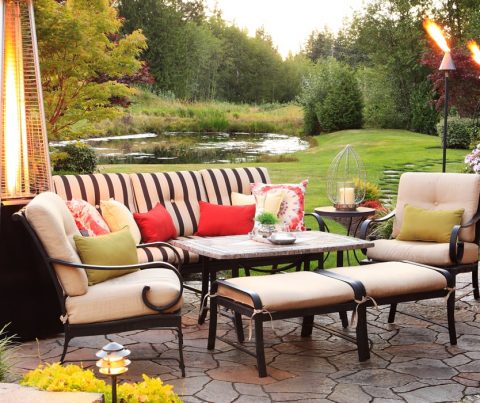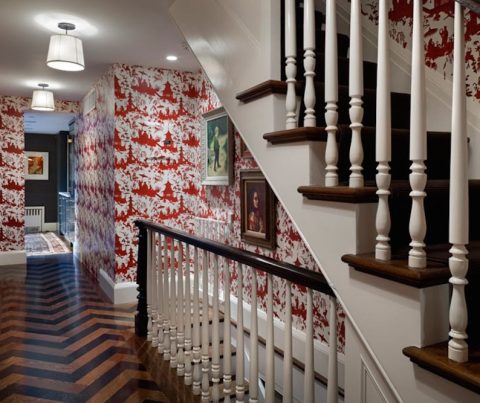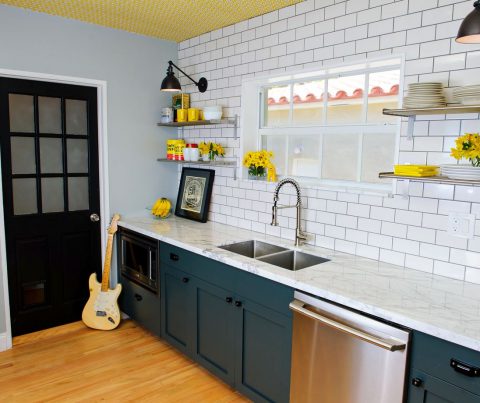Design Dictionary is a new feature that defines common (and occasionally very uncommon) terms used in interior design, architecture, and home improvement.
Pop quiz: When does a couch become a sofa? The answer: When it’s for sale at a fancier store.
The words “couch” and “sofa” refer to the exact same piece of furniture, yet most people think that they refer to completely different things. Maybe it’s because the terms bring about their own distinctive mental picture: you could imagine a high-end sofa in a minimalist shop window, and a couch in an online ad.
Coucher on the Suffah
The only real difference between a couch and a sofa is where the words came from. In these linguistic origins where we learn that, once, these furnishings were actually very different. The word “couch” came into English usage from the French verb coucher (coo-SHAY), which translates “to lie down.” It originally described a piece of furniture on which one slept.
The word “sofa” originated from suffah, an Arabic word that referred to a wood or stone bench. The first recorded usage of “sofa” to describe an upholstered item appears in English usage in 1717, where it refers to a “long, stuffed seat for reclining.”
Sofas and couches aside, there are even more terms for our favorite place to watch TV that are still used interchangeably—some correctly, and some not so much. Here’s a sampling, along with their true meanings—and a few fun, obscure terms for good measure.
Loveseat
Very easy: A mini couch that accommodates two people.
Settee
Coming from the Old English word “setl,” which became “settle,” and then “settee,” this term is used to describe a long bench with arms and a high back. Often mistaken for a loveseat.
Settle
This one doesn’t come up very often, but just in case: A settle is a wooden bench with a high back and arms that was popular in the 17th century. Think of it as a couch that was never upholstered.
Chesterfield
In the United Kingdom in the early 1900s, a “chesterfield” was what you’d call just about any sofa. Now, it refers particularly to the button-tufted, classic upholstered sofa originally commissioned by Phillip Stanhope, the Fourth Earl of Chesterfield. Fun fact: If you’re in certain parts of Canada or, oddly, Northern California, this term is still used generically to refer to any old couch, just as it was in Edwardian England.
Divan
A “divan” is a couch-like furnishing—unless you’re in the UK, where if you say “divan,” you’re referring to a bed. Originated in the Middle East, as a feature of the liwan (a narrow hall in homes, often a covered terrace). Divans have a long seat and back composed of cushions, and either lean against a wall, or have a structure of their own.
Davenport
The word “davenport” first referred to a specific series of sofas by A.H. Davenport and Company in Massachusetts. It frequently featured an exposed wood frame. Much like the way “Kleenex” is used to refer to tissues of any brand, “davenport” became another word used to refer to a formal sofa. In New York, puzzlingly, it can refer to a futon.
Canapé
A very ornate sofa that came from 18th c. France and was very popular in the 19th c. US. It has a curved back, detailed carved frame, and an upholstered seat, back, and arms. Canapés are often confused with settees.
Chaise Longue
A sofa missing its back and one arm, allowing the sitter to recline with ease. The term is French and translates to “long chair.”
Confidante
A very rare and specific type of seat, composed of two or more seats joined together at the back or sides. The confidante was made popular by famed cabinetmaker George Hepplewhite, who thought the novel design was ideal for drawing rooms. A grouping of three confidantes is often called an “indiscreet.”
Top Image Credit: Decohub
For more fun facts and obscure knowledge about architecture and interior design, read the rest of the Design Dictionary series.
